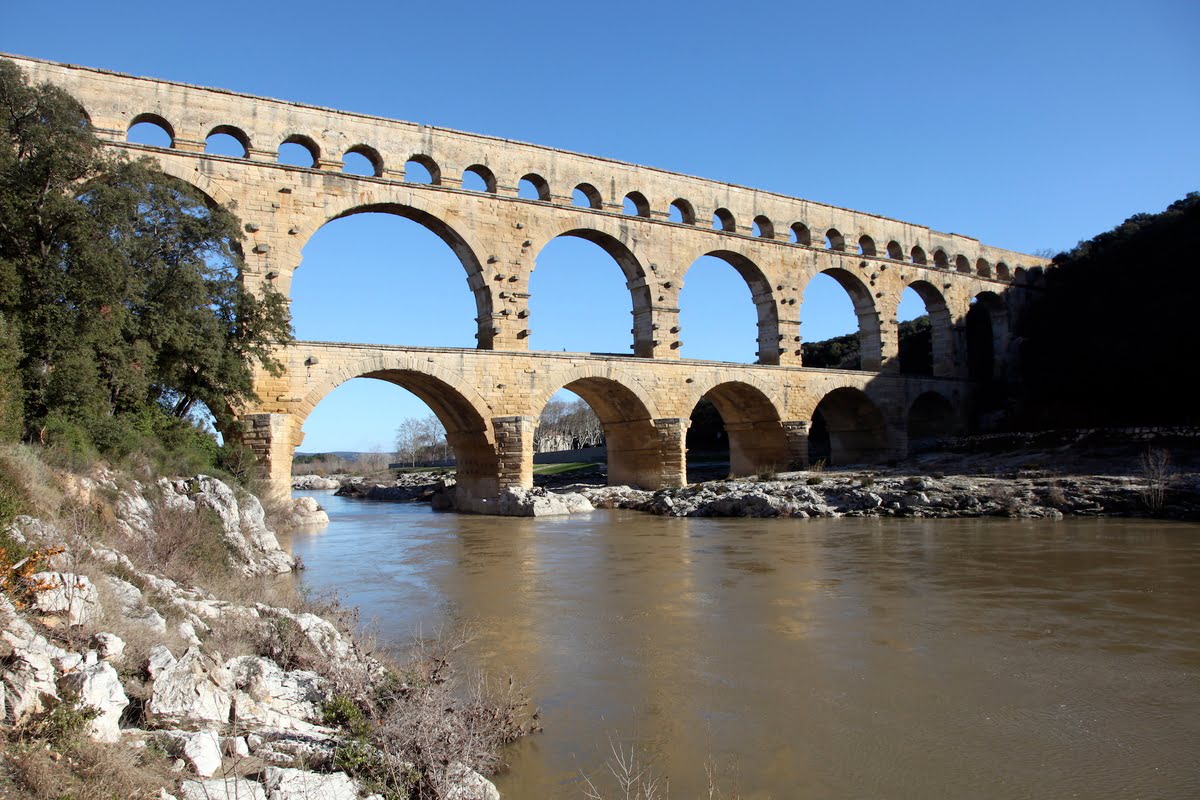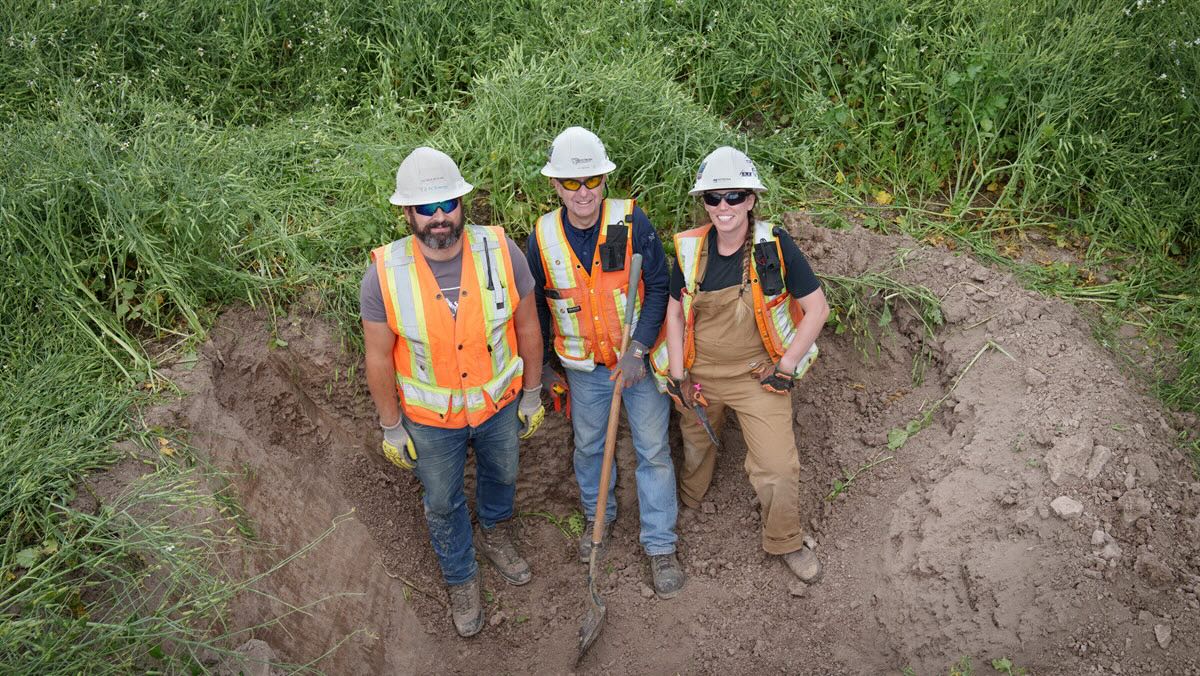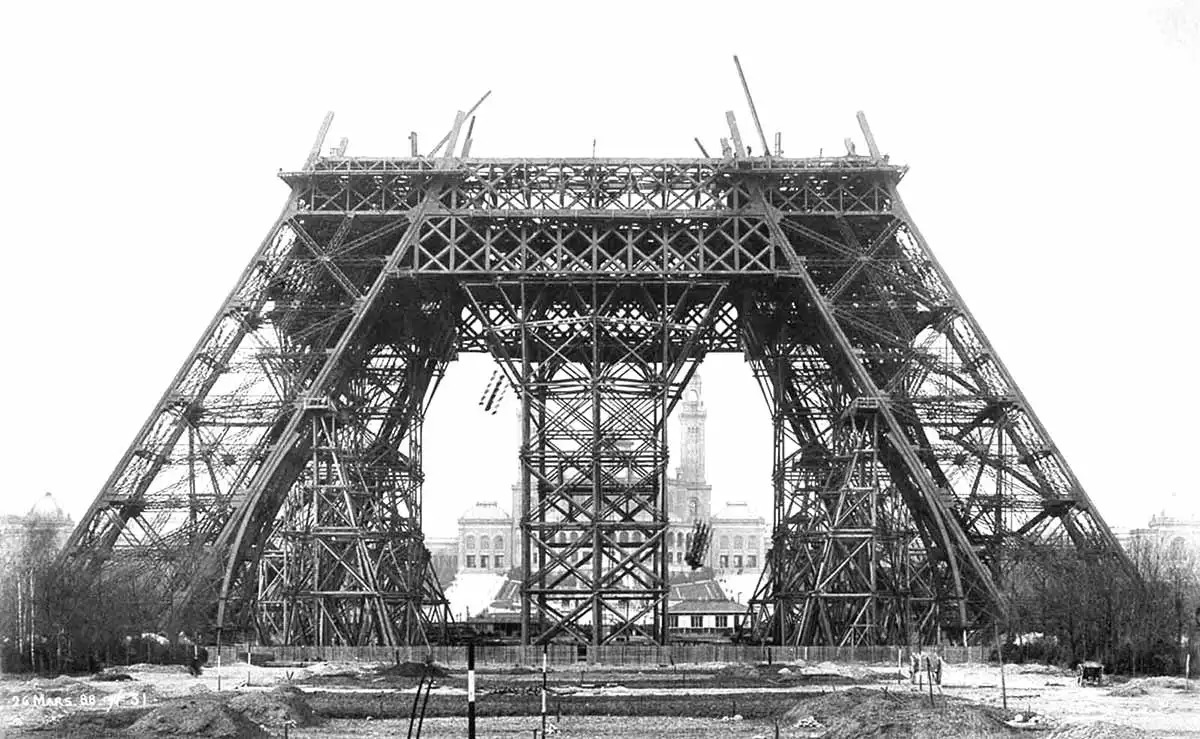Home>diy>Building & Construction>How Did Construction Of Aqueducts Most Impact Roman Life


Building & Construction
How Did Construction Of Aqueducts Most Impact Roman Life
Modified: March 6, 2024
Discover how the construction of aqueducts revolutionized Roman life, shaping their infrastructure and providing a reliable water supply. Explore the impact of building construction on ancient Rome.
(Many of the links in this article redirect to a specific reviewed product. Your purchase of these products through affiliate links helps to generate commission for Storables.com, at no extra cost. Learn more)
Introduction
When we think of the achievements of the ancient Roman civilization, it’s easy to be awestruck by their massive architectural wonders. From the magnificent Colosseum to the grand structures of the Forum Romanum, the Romans left an indelible mark on history with their engineering prowess. But perhaps one of their most significant and impactful contributions to society was the construction of aqueducts.
Aqueducts were a marvel of Roman engineering, designed to transport water over long distances and supply it to cities, towns, and even rural areas. These impressive structures revolutionized Roman life, fundamentally changing the way people interacted with water and shaping various aspects of their society. In this article, we will delve into the profound impact that the construction of aqueducts had on Roman life.
From the advancement of public health and sanitation to urban development, agricultural productivity, and even cultural and social significance, the aqueducts played a crucial role in shaping Roman society. The intricate network of aqueducts became the lifeblood of the Roman Empire, providing access to clean water and transforming the landscape in profound ways.
In the following sections, we will explore in detail the various ways in which the construction of aqueducts impacted Roman life, taking a closer look at the significance of water, the advancements in engineering and technology, and the broader societal implications of these remarkable feats of construction.
Key Takeaways:
- Aqueducts transformed Roman life by providing clean water, improving public health, boosting agriculture, and shaping urban development, showcasing the Romans’ engineering prowess and leaving a lasting cultural legacy.
- The construction of aqueducts in ancient Rome revolutionized how water was accessed and utilized, fostering economic growth, inspiring civic pride, and shaping social interactions, leaving an enduring mark on Roman society.
Read more: How Did Light Bulb Impact The World
Background on Roman Aqueducts
The construction of aqueducts in ancient Rome dates back to the 3rd century BCE and continued well into the 2nd century CE. These engineering marvels were designed to transport fresh water from distant sources, such as springs and rivers, to urban areas, ensuring a reliable water supply for the growing population.
The Romans were meticulous in their planning and execution of aqueducts, ensuring that the water flowed steadily and efficiently. They utilized a combination of gravity and carefully engineered channels to transport water over long distances, often spanning several kilometers.
The construction process involved a careful selection of the water source, followed by the assessment of the terrain and engineering feasibility studies. The aqueducts comprised a network of channels, tunnels, bridges, and reservoirs, all working in harmony to deliver water to its destination. At their peak, the Roman aqueducts covered an estimated 400 miles.
Their construction involved a combination of various materials, including stone, concrete, and lead pipes. The Romans were innovative in their use of arches and vaulted ceilings to support the weight of the aqueducts and ensure their stability.
It is worth noting that the construction of aqueducts wasn’t limited to the city of Rome alone. Various regions in the Roman Empire, including cities like Nimes, Segovia, and Tarragona, benefitted from the implementation of aqueduct systems. Each aqueduct was unique in its design and engineering, showcasing the skill and ingenuity of Roman architects and engineers.
While the Romans were not the first civilization to utilize aqueducts, they significantly improved upon existing knowledge and technology. They perfected the techniques and added their own innovations, resulting in a network of aqueducts that were unmatched in their scale and efficiency.
The establishment of aqueducts marked a turning point in the history of water supply, not just for the Romans but for civilizations that followed in their footsteps. The impact of Roman aqueducts on society, both in terms of infrastructure and quality of life, cannot be overstated.
The Importance of Water in Roman Life
Water played a vital role in Roman society, and its availability had a profound impact on all aspects of daily life. The construction of aqueducts revolutionized the way Romans accessed and utilized water, providing numerous benefits to the growing population.
One of the primary reasons water was essential in Roman life was for drinking and sanitation purposes. Clean and accessible water sources were crucial for ensuring public health and preventing the spread of diseases. With the implementation of aqueduct systems, Romans had access to a reliable supply of fresh water, reducing the risk of waterborne illnesses.
Furthermore, water was necessary for everyday tasks such as cooking, cleaning, and bathing. The ability to easily access water improved hygiene standards and contributed to a healthier population. Clean water also facilitated the development of public baths, which served as social and recreational spaces for Romans to relax and socialize.
Adequate water supply was also critical for agriculture and irrigation. Romans were skilled farmers, and water played a crucial role in enhancing agricultural productivity. The construction of aqueducts enabled irrigation of farmland, allowing for the cultivation of a wide range of crops and supporting the growth of the Roman economy.
In addition to domestic and agricultural uses, water played a significant role in various industries, such as mining and manufacturing. The availability of water, made possible by aqueducts, facilitated the operation of mills, workshops, and factories. Water-powered machinery was essential for various production processes, including grinding grain, sawing wood, and manufacturing textiles.
Water also held symbolic and cultural significance in Roman society. Fountains, often supplied by aqueducts, were a common feature in public spaces, manifesting the Romans’ appreciation for aesthetics and creating a sense of grandeur. These fountains served as gathering points and focal points for social interactions, enhancing the overall ambiance of the city.
Overall, the construction of aqueducts had a profound impact on the availability and utilization of water in Roman life. It improved public health, supported agricultural productivity, drove economic growth, and added to the cultural and social fabric of Roman society. The aqueducts were a testament to the Romans’ ingenuity and engineering prowess, leaving a lasting legacy on civilizations that followed.
Impact on Public Health and Sanitation
The construction of aqueducts had a transformative effect on public health and sanitation in ancient Rome. Prior to the implementation of aqueduct systems, access to clean and reliable water sources was limited, leading to unsanitary living conditions and the spread of diseases.
With the arrival of aqueducts, Romans gained access to a consistent supply of fresh water, which drastically improved public health. The availability of clean water meant that people could maintain better hygiene practices, such as regular bathing and washing clothes. Proper sanitation helped reduce the transmission of diseases and improved overall well-being.
One notable example of the impact of aqueducts on public health is evidenced by the construction of vast public bathing facilities, known as thermae. These grand structures provided Romans with a place to cleanse their bodies and promote personal hygiene. The thermae featured various heated rooms, swimming pools, and baths, all supplied with water from the aqueducts. This increased focus on personal cleanliness played a significant role in reducing the incidence of skin infections and improving overall cleanliness in society.
In addition to personal hygiene, the availability of clean water also had a positive impact on public sanitation. With a reliable water supply, Romans were able to construct an advanced sewerage system that effectively removed waste from the city. The aqueducts enabled the efficient functioning of sewage infrastructure, preventing the accumulation of waste and the spread of disease.
Moreover, clean water supply contributed to the improvement of overall living conditions. It enabled Romans to maintain cleaner living spaces, reducing the presence of pests and improving general cleanliness. This, in turn, had a positive impact on public health by minimizing the occurrence of diseases transmitted through unhygienic living conditions.
The construction of aqueducts had a ripple effect on the health and well-being of the Roman population. It ensured a reliable and clean water supply, promoting better personal hygiene, sanitation, and overall public health. By implementing this advanced water infrastructure, ancient Romans demonstrated their commitment to the well-being of their citizens and created a foundation for a healthier and more hygienic society.
Influence on Urban Development and Growth
The construction of aqueducts significantly influenced the urban development and growth of ancient Roman cities. The availability of a reliable water supply played a crucial role in shaping the layout and infrastructure of urban areas, ultimately contributing to the expansion and prosperity of Roman civilization.
Prior to the implementation of aqueducts, the availability of water sources limited the size and population density of cities. Settlements had to be situated near natural water sources, such as rivers or springs, which restricted the growth and development potential. With the introduction of aqueducts, Romans were no longer bound by these geographical constraints and could establish cities in more favorable locations.
The presence of an aqueduct system allowed for the construction of large-scale public buildings and structures. The accessibility of water enabled the development of grand fountains, ornamental gardens, and decorative pools that adorned the urban landscape. These architectural features not only added aesthetic value but also served as symbols of wealth, power, and civic pride.
A reliable water supply also facilitated the construction of various essential infrastructure, such as baths, public toilets, and markets. These amenities attracted people to urban areas, contributing to the growth and population increase of Roman cities. The availability of water created favorable conditions for commerce, trade, and economic activities, which further stimulated urban development and prosperity.
The aqueducts also played a significant role in sustaining the growth of industries within urban centers. Access to clean water allowed for the establishment of workshops, mills, and factories that heavily relied on water as a power source. Industries such as textile production, milling, and metalworking thrived with the availability of a consistent water supply, contributing to the economic growth and urbanization of Roman cities.
Furthermore, the development of aqueduct systems facilitated the expansion of residential areas. Romans were no longer confined to settling near limited water sources but could inhabit areas farther from natural water bodies. The increased availability of water through aqueducts allowed for the construction of housing complexes and apartment buildings, enabling the population to spread out and create more vibrant and diverse urban neighborhoods.
In summary, the construction of aqueducts revolutionized the urban development and growth of ancient Roman cities. The availability of a reliable water supply transformed the landscape by enabling the construction of grand public buildings, essential infrastructure, and industries. It allowed for the expansion of residential areas and attracted people to urban centers, fostering economic prosperity and cultural vibrancy within the Roman civilization.
The construction of aqueducts most impacted Roman life by providing a reliable supply of clean water to cities, allowing for the growth of urban centers and improved public health.
Read more: How Did The Seed Drill Impact Society
Enhancement of Agricultural Productivity
One of the significant impacts of the construction of aqueducts in ancient Rome was the significant enhancement of agricultural productivity. The introduction of a reliable water supply through the aqueduct systems revolutionized agricultural practices, enabling the Romans to cultivate a wide range of crops and boost food production.
Prior to the construction of aqueducts, farmers relied heavily on natural rainfall for irrigation. However, this dependence on unpredictable weather patterns limited the types of crops that could be grown and resulted in inconsistent yields. With the implementation of aqueducts, Romans had access to a steady water supply that enabled them to irrigate their fields consistently.
By utilizing water from aqueducts to irrigate their farmlands, Romans were able to grow crops throughout the year, regardless of seasonal rainfall patterns. This had a profound impact on agricultural productivity, allowing farmers to maximize their yield and diversify their crop production. The availability of water also enabled the cultivation of crops that were previously difficult to grow due to arid conditions.
The consistent supply of water brought by aqueducts also supported the implementation of advanced farming techniques. Romans were able to practice more efficient irrigation methods, such as channeling water directly to the roots of crops, rather than relying solely on surface irrigation. This precise water management helped optimize water usage and minimize wastage, leading to higher crop yields and increased overall productivity.
In addition to crop cultivation, the availability of water facilitated the development of vineyards and orchards. Grapes, olives, and other fruit-bearing trees require a regular water supply for optimal growth and cultivation. The introduction of aqueducts enabled farmers to establish these specialized agricultural areas, resulting in the production of high-quality wines, oils, and fruits.
The enhanced agricultural productivity brought about by the construction of aqueducts had significant economic implications for the Roman Empire. The surplus agricultural produce could be traded and exported to other regions, contributing to the growth of commerce and the development of a thriving agricultural economy.
Overall, the construction of aqueducts revolutionized agricultural practices in ancient Rome. The reliable water supply provided by the aqueduct systems improved irrigation techniques, increased crop diversity, and boosted overall productivity. This advancement in agriculture not only ensured food security for the growing population but also stimulated economic growth through the trading of agricultural produce.
Role in Roman Engineering and Technological Advancements
The construction of aqueducts in ancient Rome played a pivotal role in advancing engineering and technological prowess within the Roman Empire. The aqueducts challenged the limits of engineering knowledge at the time, pushing Romans to develop innovative techniques and materials to create these impressive structures.
Roman engineers faced various challenges when constructing aqueducts, including navigating challenging terrains, overcoming long distances, and maintaining a consistent water flow. In tackling these obstacles, they developed ingenious engineering solutions that demonstrated their technical expertise.
One of the notable engineering advancements in aqueduct construction was the extensive use of arches and vaulted ceilings. Romans incorporated arches into their aqueduct designs to evenly distribute the weight of the structure and support the flow of water. This architectural innovation allowed Romans to build aqueducts over valleys, across rivers, and even through mountains.
To ensure the stability and durability of the aqueducts, Roman engineers used various building materials, including stone and concrete. They perfected the technique of using concrete, known as opus caementicium, which provided strength and flexibility to withstand the pressure of the flowing water. The use of concrete in aqueduct construction was a significant technological advancement, setting the foundation for future architectural achievements.
Roman engineers also demonstrated their understanding of hydraulics in designing the aqueducts. They developed sophisticated systems that relied on gravity to transport water from higher elevations to lower areas. The precise calculation of gradients and slopes in the aqueducts’ channels ensured a consistent downward flow, enabling the water to reach its destination effectively.
In addition to the engineering aspects, aqueduct construction required sophisticated surveying techniques. Roman engineers meticulously surveyed the terrain to determine the most efficient route for the aqueducts. They had to consider factors such as the elevation change, optimal water flow, and avoiding obstacles along the path.
The construction of aqueducts also spurred advancements in other related technologies. Roman engineers developed techniques for constructing bridges to support the aqueducts, such as the Pont du Gard in France. They also perfected the manufacturing of lead pipes to transport water over shorter distances, ensuring a reliable distribution network within cities.
Overall, the construction of aqueducts served as a testament to the engineering and technological prowess of the Romans. Their innovative use of arches, concrete, and hydraulics exhibited their advanced understanding of structural mechanics and water management. These technical advancements not only facilitated the construction of aqueducts but also laid the foundation for future engineering marvels and influenced architectural practices for centuries to come.
Economic and Trade Implications
The construction of aqueducts in ancient Rome had far-reaching economic and trade implications. The availability of a reliable water supply through these impressive engineering feats transformed the economic landscape and contributed to the prosperity of the Roman Empire.
One of the primary economic impacts of aqueducts was the enhancement of agricultural productivity. With a consistent water supply, farmers were able to cultivate a wider variety of crops and increase their yields. This surplus agricultural produce not only supported the growing population but also became a valuable commodity for trade. Rome was able to export agricultural goods, such as grains, olives, and wine, to other regions within the empire, generating significant income and stimulating economic growth.
The availability of a stable water source also facilitated the development of specialized agricultural industries. The irrigation made possible by aqueducts allowed for the cultivation of cash crops such as grapes, which led to the production of high-quality wines. Olive groves flourished, producing olive oil that became a sought-after commodity across the Roman Empire. These agricultural products fueled trade and created new economic opportunities for merchants and producers.
Moreover, the construction of aqueducts had a direct impact on urban development, leading to increased economic activity within cities. The reliable water supply supported the establishment of various industries, such as textile manufacturing, metalwork, and pottery. Water-powered mills and workshops flourished, providing employment opportunities and contributing to the local economy.
The presence of aqueducts also facilitated the growth of urban markets. With a reliable water supply, vendors could offer a wider variety of products, as water was needed for cleaning, cooking, and other commercial activities. Markets became vibrant hubs of economic activity, attracting traders and buyers from near and far. This bustling trade not only stimulated economic growth but also fueled cultural exchange and contributed to the cosmopolitan nature of Roman cities.
Furthermore, the construction of aqueducts had indirect economic benefits. The infrastructure created for the aqueducts, such as bridges, tunnels, and reservoirs, required a vast workforce. This provided employment opportunities and injected money into the local economy. The construction of aqueducts also necessitated the mining and extraction of building materials such as stone and lead, further fueling economic activity.
In summary, the construction of aqueducts had significant economic and trade implications for ancient Rome. It improved agricultural productivity, fostered specialized industries, and stimulated trade within the Roman Empire. The reliable water supply provided by aqueducts not only supported the growing population but also fueled economic growth and contributed to the overall prosperity of the Roman civilization.
Cultural and Social Significance
The construction of aqueducts in ancient Rome had profound cultural and social significance, shaping the way Romans lived, interacted, and perceived their civilization. The presence of these impressive engineering feats left a lasting impact on the cultural fabric of Roman society.
One of the key cultural aspects influenced by aqueducts was the appreciation for aesthetics and grandeur. Fountains, supplied by aqueducts, became prominent features in public spaces, adorning city squares, gardens, and courtyards. These ornate fountains not only provided a source of water but also served as symbols of beauty and opulence. They became popular meeting places, where people would gather for leisure, socializing, and enjoying the splendor of their surroundings.
The construction of aqueducts also had a profound impact on public bathing culture in Rome. The availability of a reliable water supply through the aqueducts led to the development of grand public bath complexes, known as thermae. These thermae became integral parts of Roman society, serving as communal spaces for relaxation, cleanliness, and socialization. Bathing in these grand complexes became an important social activity, promoting a sense of community and reinforcing social hierarchies.
The aqueducts also had implications for social stratification within Roman society. The reliable water supply provided an advantage to the elite classes who had access to the luxurious amenities supplied by the aqueducts. The presence of private villas, gardens, and baths adorned with water features became symbols of wealth and status, further accentuating the societal divide.
Moreover, the construction of aqueducts fostered a sense of civic pride and unity among the Roman populace. The aqueducts represented the ingenuity and engineering prowess of the empire, showcasing the power and capabilities of Roman civilization. The massive structures served as collective accomplishments, reminding residents of the greatness and grandeur of their city and empire.
Additionally, the aqueducts played a role in promoting Roman engineering and technological advancements. The construction of these monumental structures became a source of inspiration and admiration for future generations of engineers and architects. The aqueducts set the stage for further architectural marvels and influenced architectural practices throughout history.
Importantly, the construction and maintenance of aqueducts required the cooperation and coordination of various factions of society. The aqueducts became symbols of collective effort and civic responsibility, fostering a sense of community and shared identity among the Roman citizens.
In summary, the construction of aqueducts had significant cultural and social implications for ancient Rome. It inspired an appreciation for beauty and grandeur, shaped public bathing culture, reinforced social hierarchies, fostered civic pride, and left a lasting legacy of engineering brilliance. The aqueducts became integral to the cultural identity of the Roman civilization, symbolizing their achievements and collective spirit.
Read more: How Did Air Conditioning Impact Society
Conclusion
The construction of aqueducts in ancient Rome revolutionized the way water was accessed, utilized, and distributed, leaving an indelible mark on Roman life and society. These remarkable engineering feats had multifaceted impacts, ranging from public health and sanitation to urban development, agricultural productivity, engineering advancements, economic growth, and cultural significance.
The aqueducts provided a reliable water supply, improving public health and hygiene standards. They facilitated the development of grand public bathing complexes, enhancing cleanliness and well-being. The availability of clean water also contributed to the overall sanitation of urban areas and led to the development of advanced sewerage systems.
The construction of aqueducts played a vital role in urban development and growth. It enabled the expansion of cities, as Romans were no longer confined to settle near natural water sources. The aqueducts supported the construction of public buildings, amenities, and industries, promoting economic activity and trade.
Agricultural productivity witnessed a significant boost with the introduction of aqueducts. Farmers benefited from a reliable water supply, allowing for year-round cultivation, increased crop diversity, and improved yields. The surplus agricultural produce facilitated trade and economic growth within the Roman Empire.
The construction of aqueducts demonstrated the Romans’ engineering and technological prowess. They pioneered techniques such as arches, vaulted ceilings, and hydraulic engineering, setting the stage for future architectural achievements. The aqueducts also fostered advancements in related technologies, such as bridge construction and lead pipe manufacturing.
Economically, the aqueducts had far-reaching implications. They fueled trade, supported specialized industries, and contributed to the economic prosperity of Roman cities. The aqueducts also had cultural and social significance, inspiring aesthetic admiration, shaping public bathing culture, and fostering civic pride among the population.
In conclusion, the construction of aqueducts in ancient Rome was a remarkable feat of engineering with profound impacts on Roman life. These impressive structures revolutionized public health, supported urban growth, enhanced agricultural productivity, advanced engineering and technology, stimulated economic growth, and left an enduring cultural and social legacy. The aqueducts stand as a testament to the ingenuity and vision of the ancient Romans, shaping not only their civilization but also influencing future civilizations and engineering practices for centuries to come.
Frequently Asked Questions about How Did Construction Of Aqueducts Most Impact Roman Life
Was this page helpful?
At Storables.com, we guarantee accurate and reliable information. Our content, validated by Expert Board Contributors, is crafted following stringent Editorial Policies. We're committed to providing you with well-researched, expert-backed insights for all your informational needs.














0 thoughts on “How Did Construction Of Aqueducts Most Impact Roman Life”